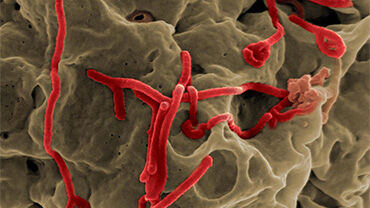Ebola outbreak in Uganda under ECDC monitoring
ECDC is actively monitoring the Ebola outbreak in Uganda through its epidemic intelligence activities and regular communication with Africa CDC, WHO (Ebola Disease caused by Sudan virus – Uganda) and GOARN partners. Weekly updates are available in the ECDC weekly communicable disease threats report.
The outbreak is still relatively limited in size (48 cases). More importantly, transmission has not been documented in densely populated areas. The spread of the ongoing outbreak to other areas within Uganda and/or in neighbouring countries cannot be excluded.
While one death has occurred in the capital city of Kampala, it concerns an individual who fled from the affected districts and passed away in the capital. The patient arrived in the city in a serious condition, which alerted the healthcare workers; therefore, protective measures were applied. A total of 42 contacts have been identified. No other cases have been recorded in the city.
As of 10 October 2022, and according to the Uganda Ministry of Health, 48 confirmed cases have been reported, including 17 deaths, of which four were healthcare workers. There have been 14 recoveries from EVD, including five healthcare workers. There are an additional 20 probable deaths among individuals who died before a sample was taken. All cases reported outside Mubende have an epidemiological link to the cases initially reported in Mubende.
Risk to EU/EEA citizens living in or travelling to affected areas in Uganda
The current probability that EU/EEA citizens living in or travelling to Ebola virus disease (EVD)-affected areas of Uganda will be exposed to the virus is very low, if they adhere to the recommended precautionary measures.
Transmission requires direct contact with blood, secretions, organs, or other bodily fluids of dead or living infected persons or animals; these are all unlikely exposures for the general EU/EEA tourists or expatriates in Uganda.
Options for response for public health authorities
EU/EEA public health authorities should increase the awareness of health professionals on the evolution of the current outbreak, and on the potential symptoms of EVD in returning travellers, health professionals or humanitarian workers. Infection prevention and control guidance for suspected EVD cases should be reviewed and training should be revisited.
In addition, the revision of testing options and procedures for suspected EVD patients should also be performed. WHO advises against any restrictions on travel and/or trade to Uganda based on available information for the current outbreak.
ECDC considers that screening of travellers returning from Uganda would not be an effective measure to prevent introduction in Europe. This consideration is based on the lessons and results of the large EVD outbreak in West Africa between 2013 and 2016, where tens of thousands of cases were reported, transmission was ongoing in large urban centres, and hundreds of EU/EEA humanitarian and military personnel were deployed to the affected areas.
Screening incoming travellers is time- and resource-consuming and will not effectively identify infected cases.
Instead, both experience and evidence show that exit screening from affected countries can be an effective measure to support the containment of the disease spread.
Recommendations and precautionary measures for EU/EEA visitors and residents of affected areas
- Avoid contact with symptomatic patients/their bodily fluids, bodies and/or bodily fluids from deceased patients;
- Avoid consumption of bush meat and contact with wild animals, both alive and dead;
- Wash and peel fruit and vegetables before consumption;
- Wash hands regularly using soap or antiseptics;
- Ensure safe sexual practices.
Background information
The current outbreak in Uganda is caused by the Sudan ebolavirus strain, against which no vaccines or other pharmaceuticals are licensed. Therefore, reliance on rapid case identification, contact tracing and effective infection prevention and control measures remain the key response measures in the current situation.







